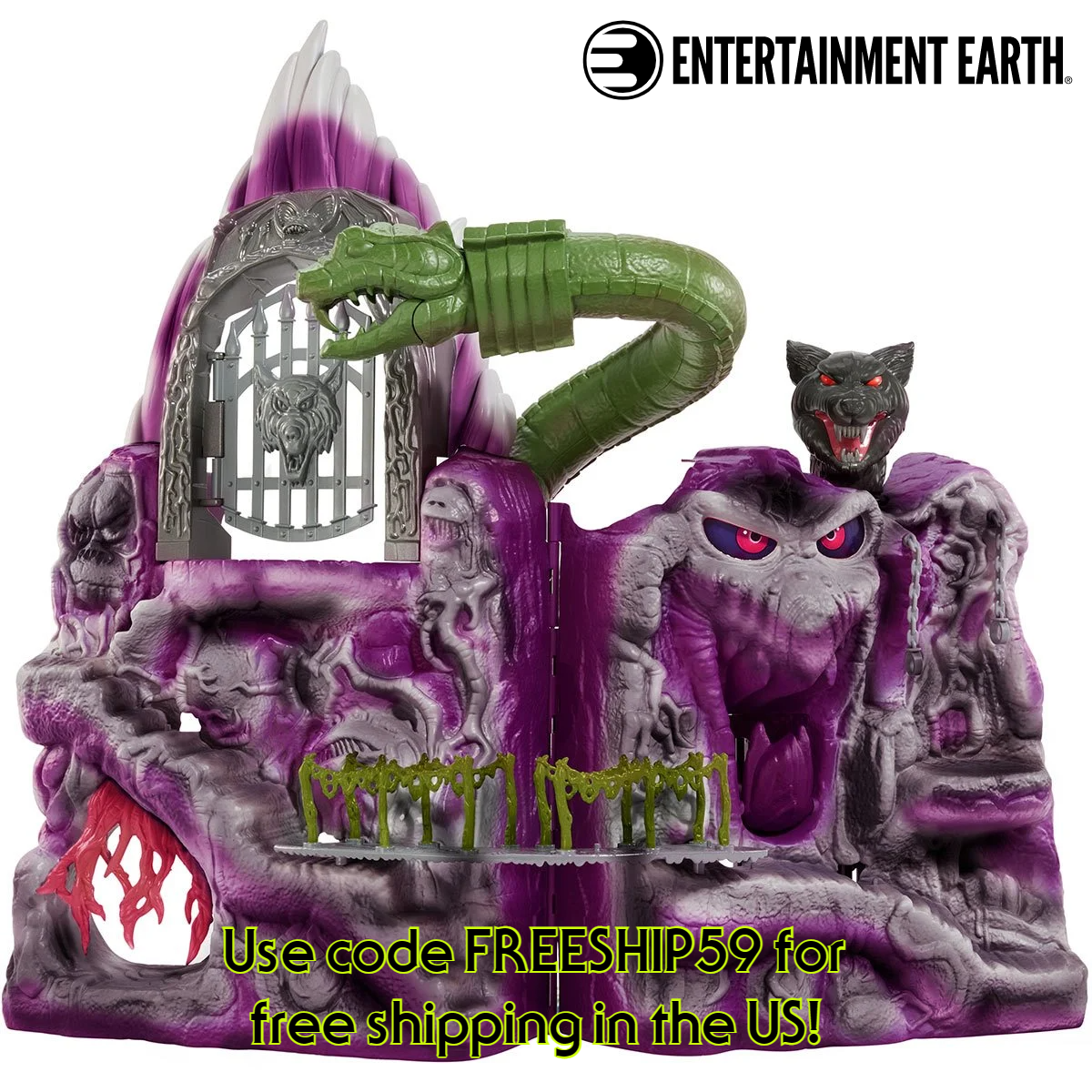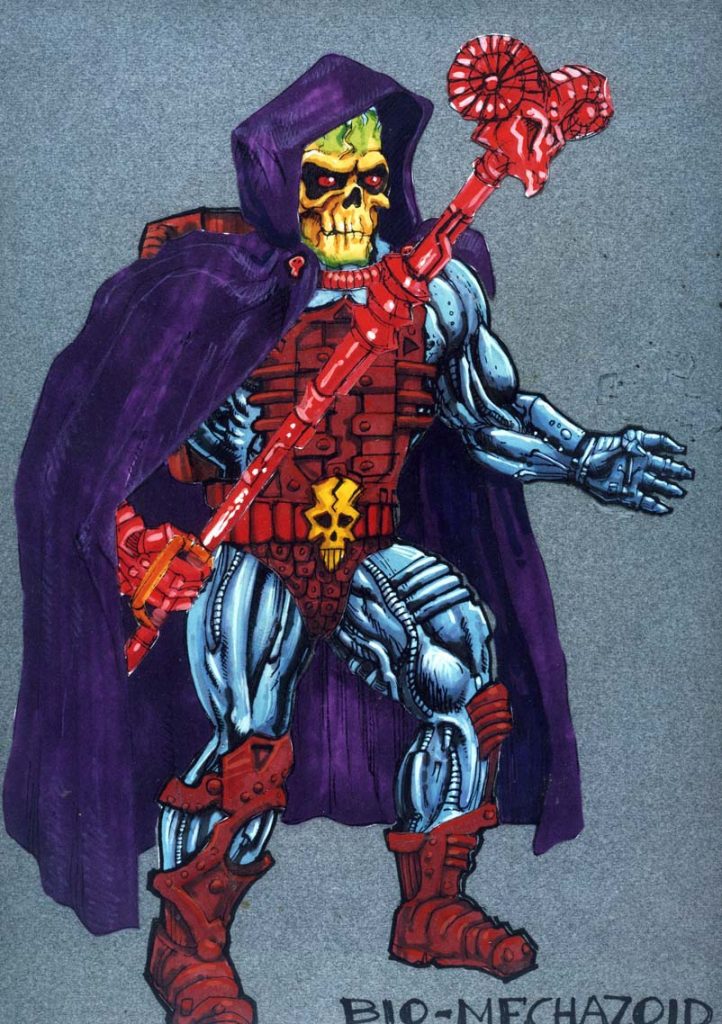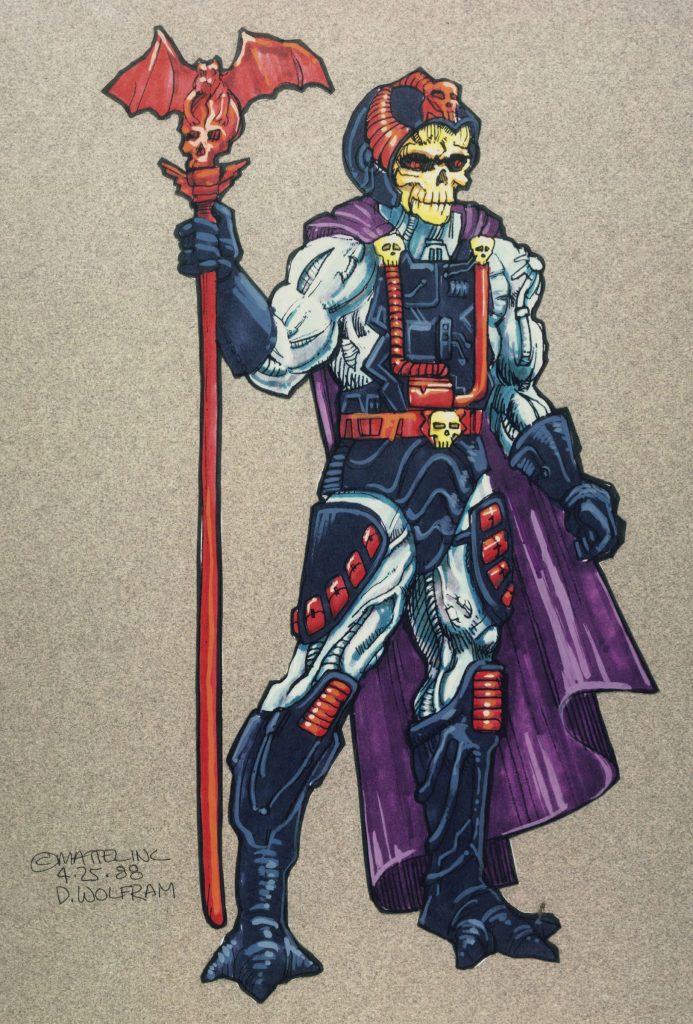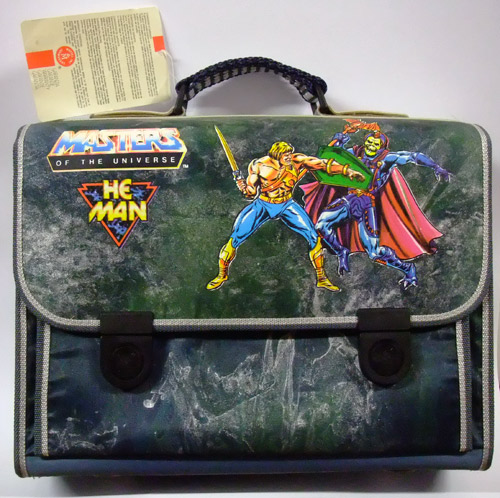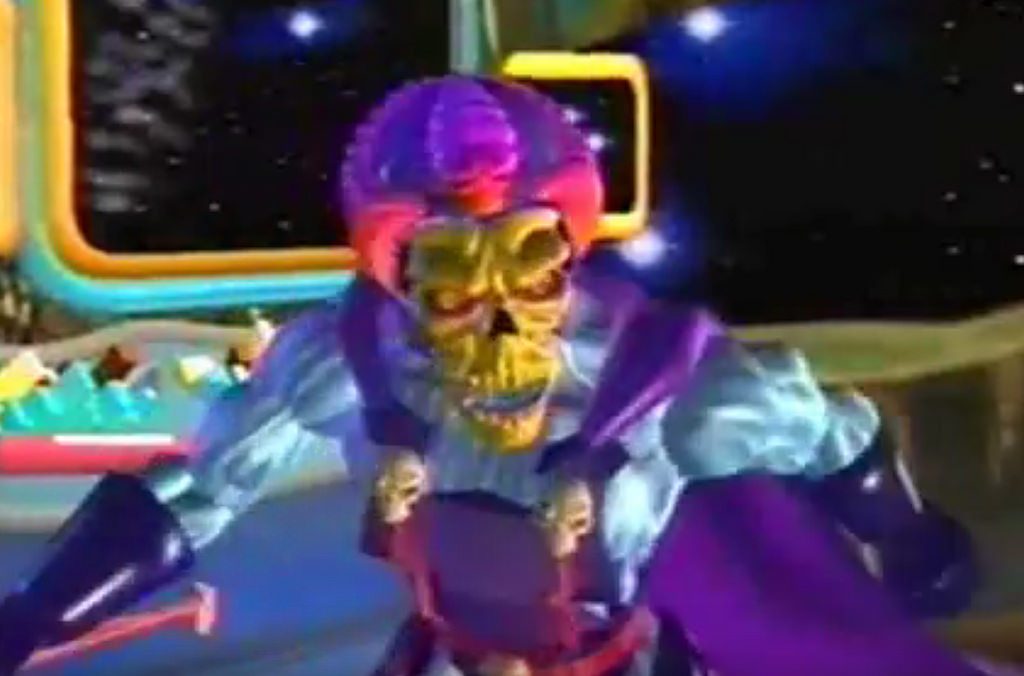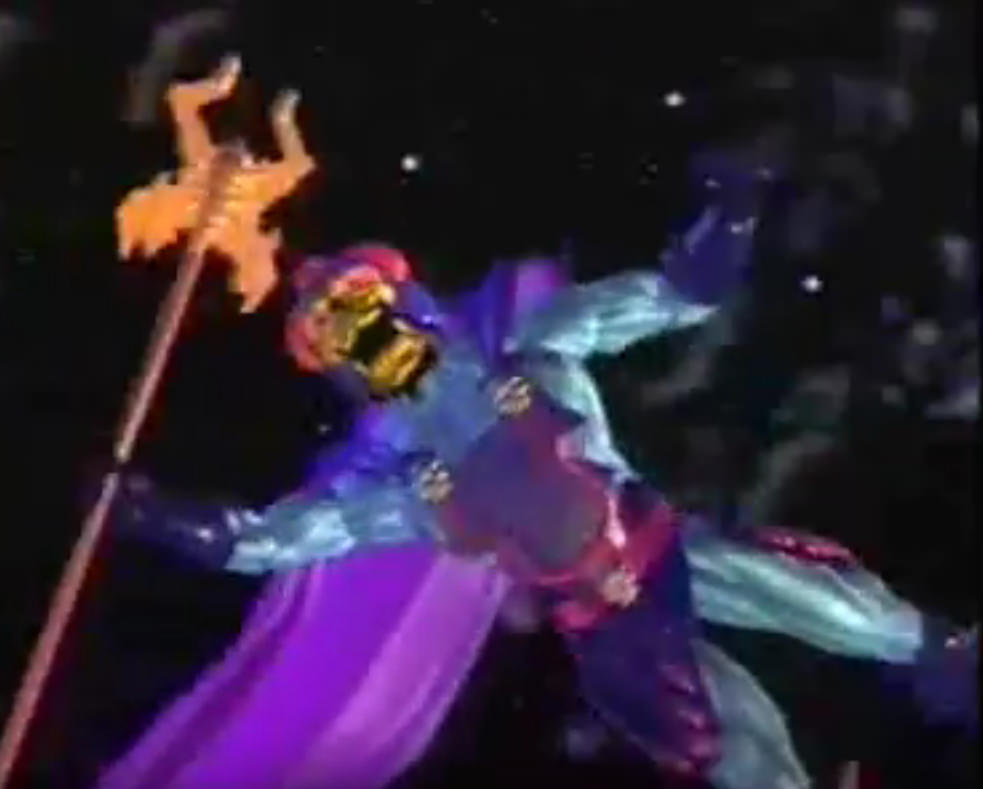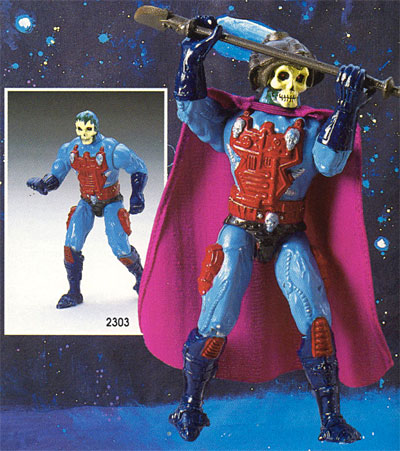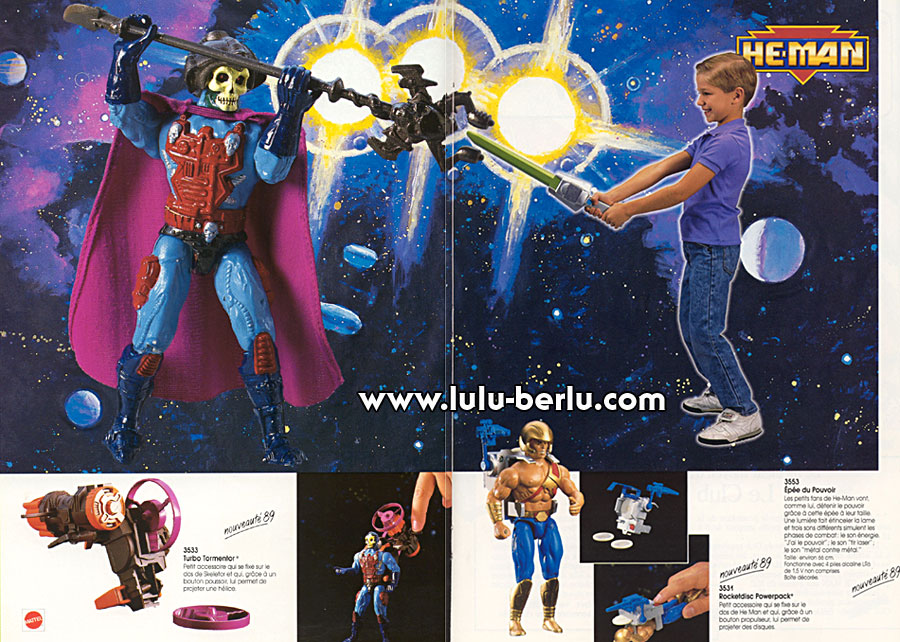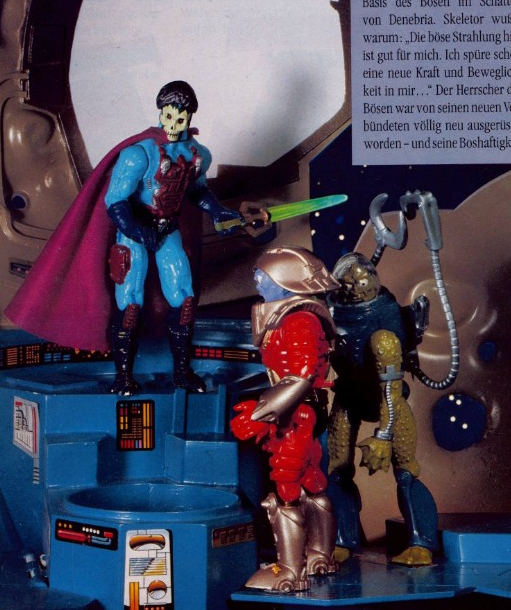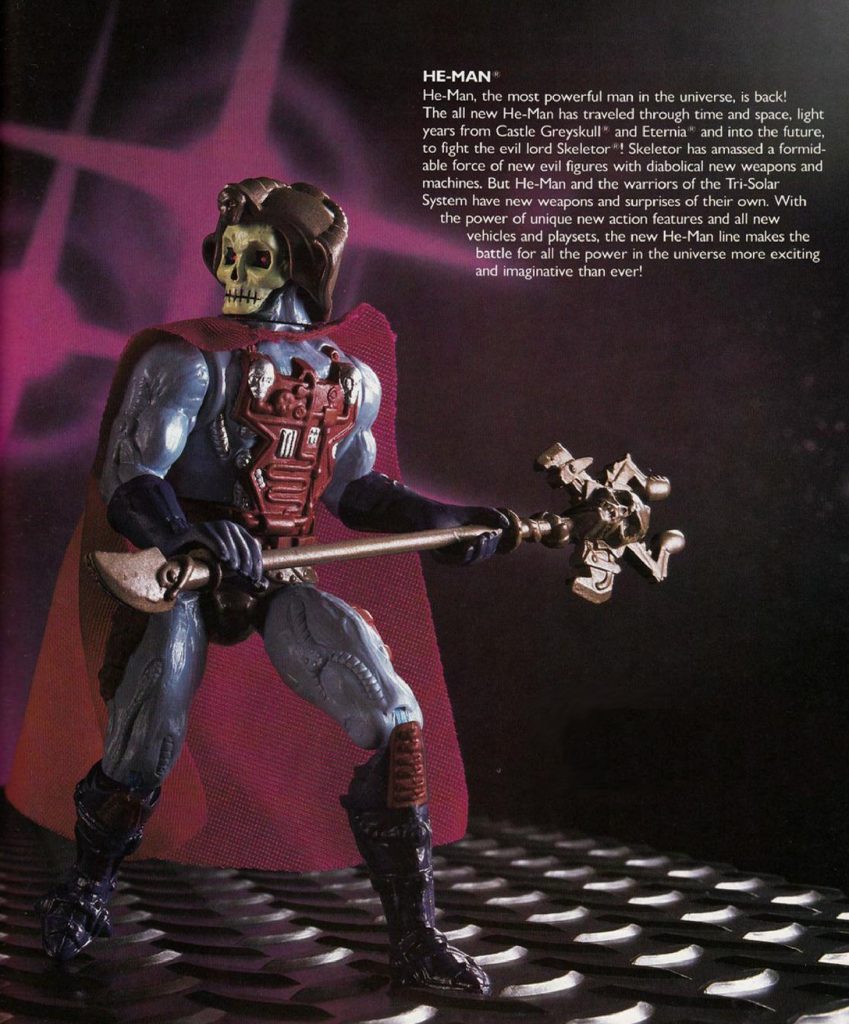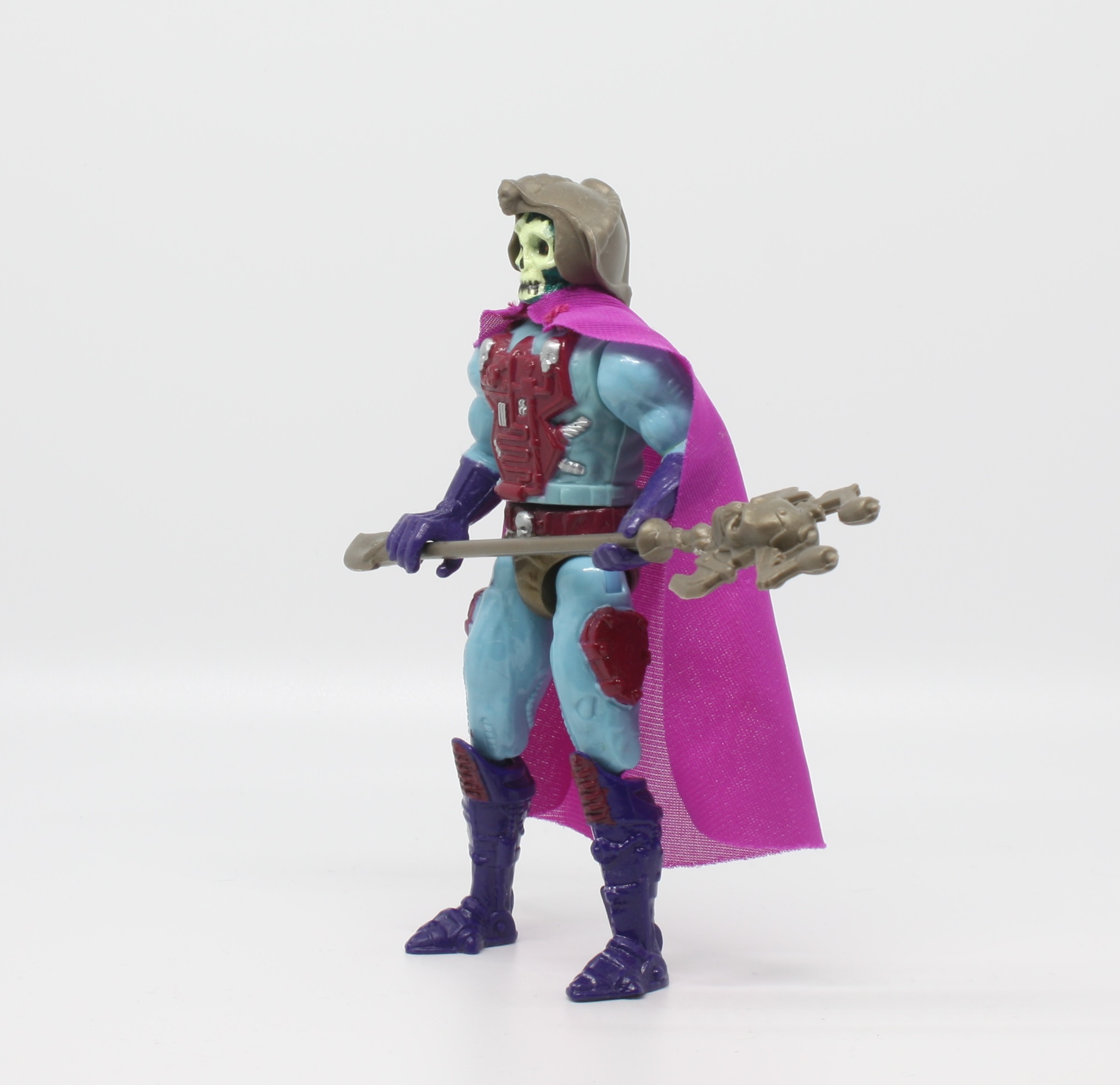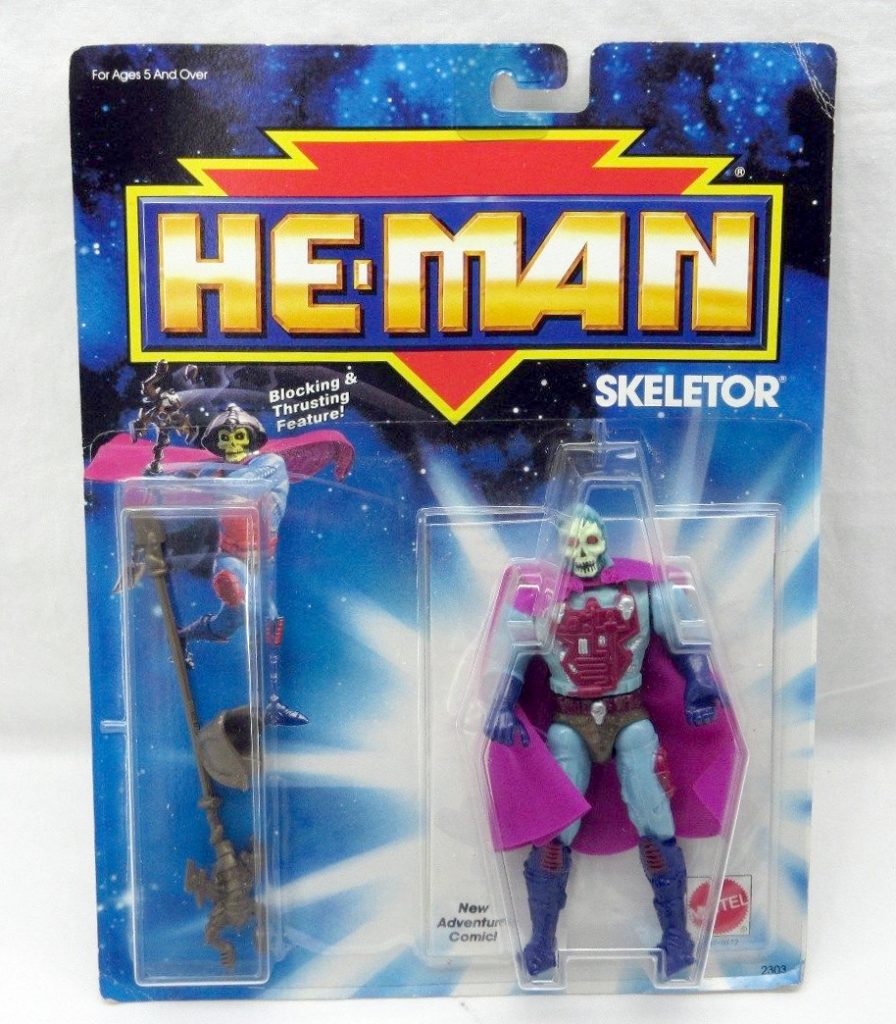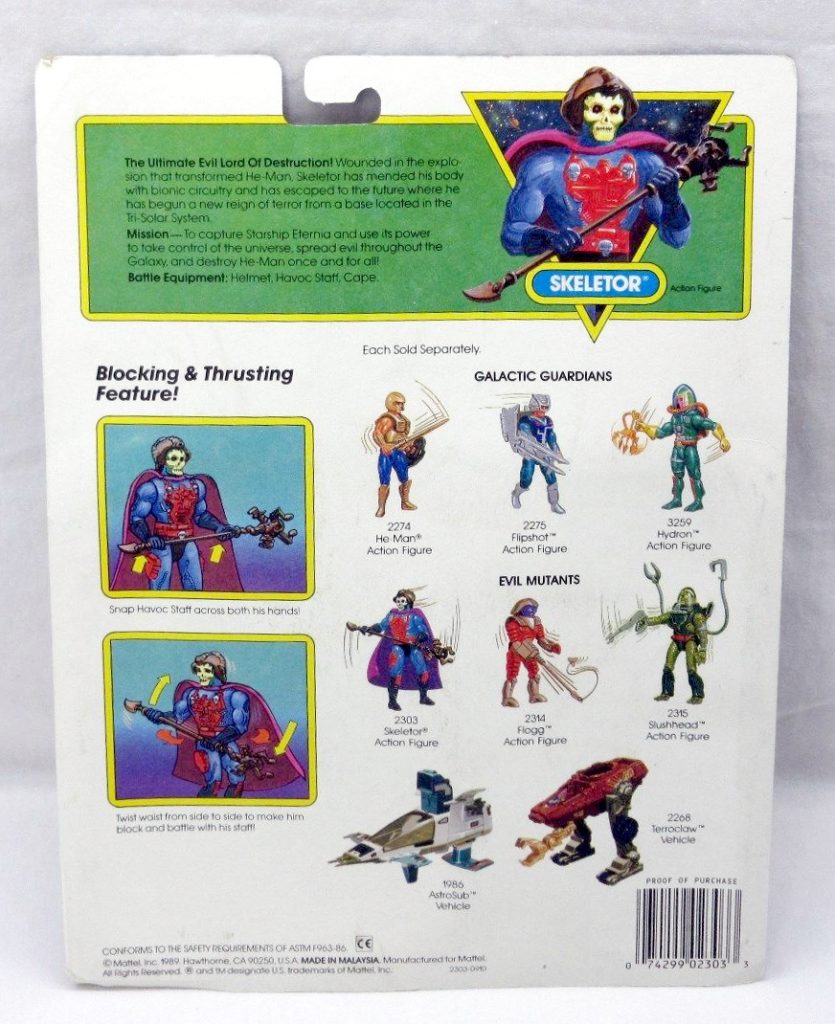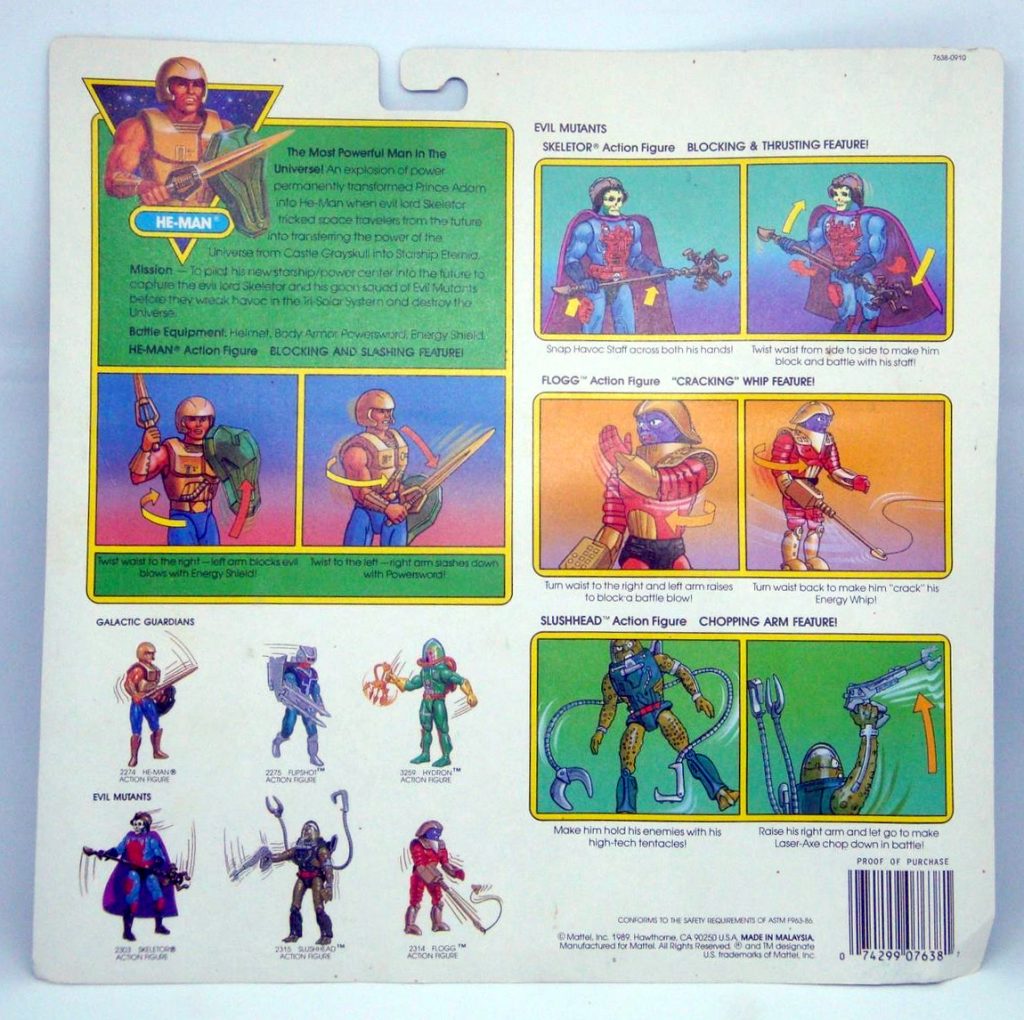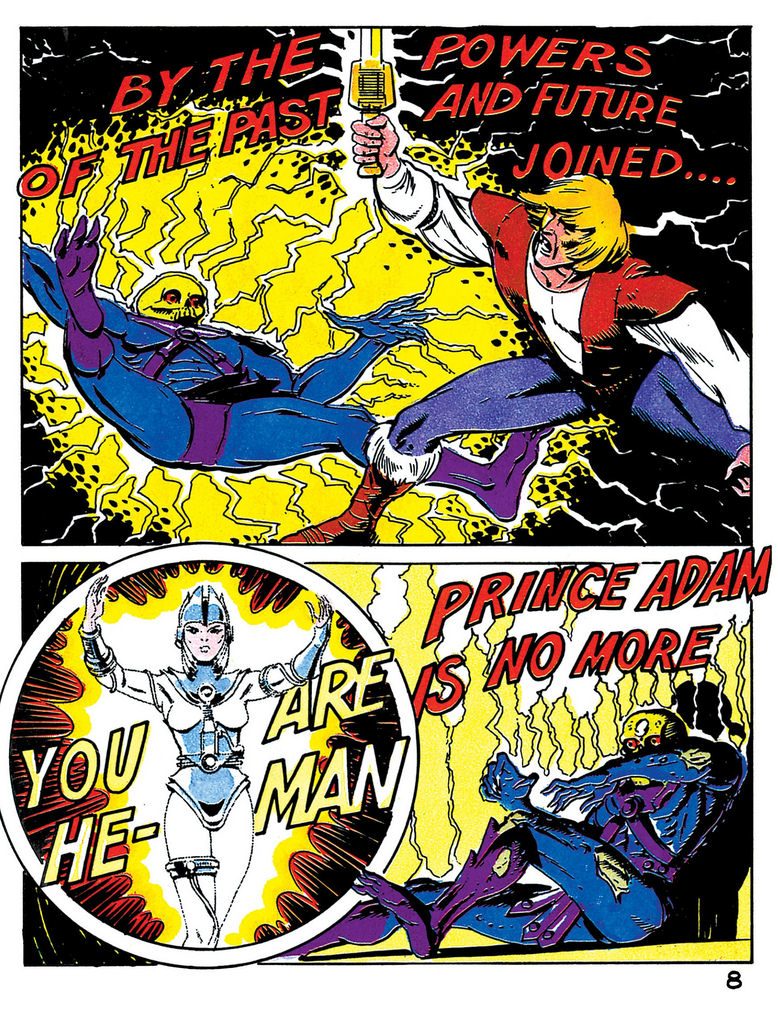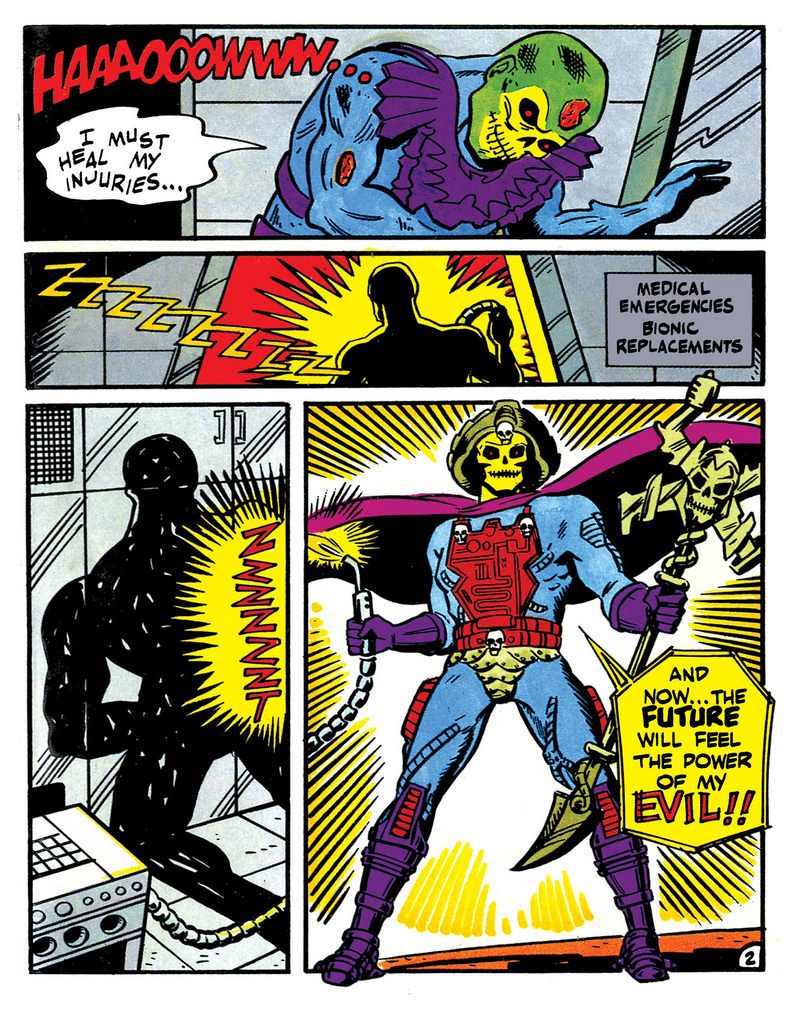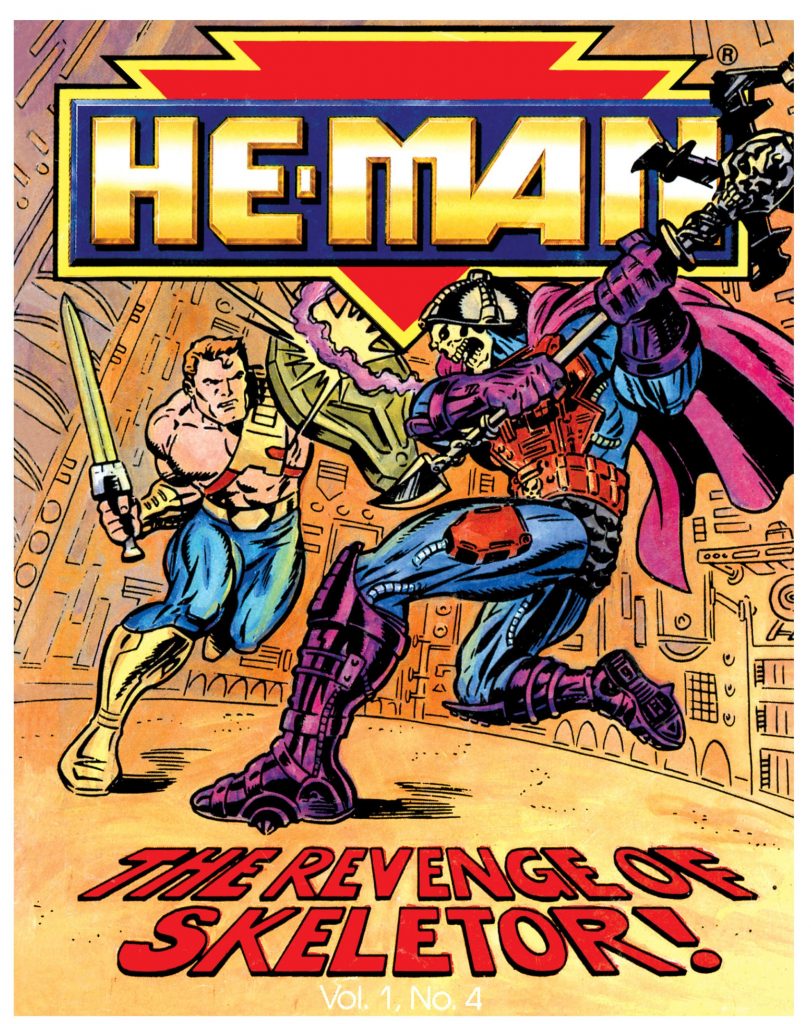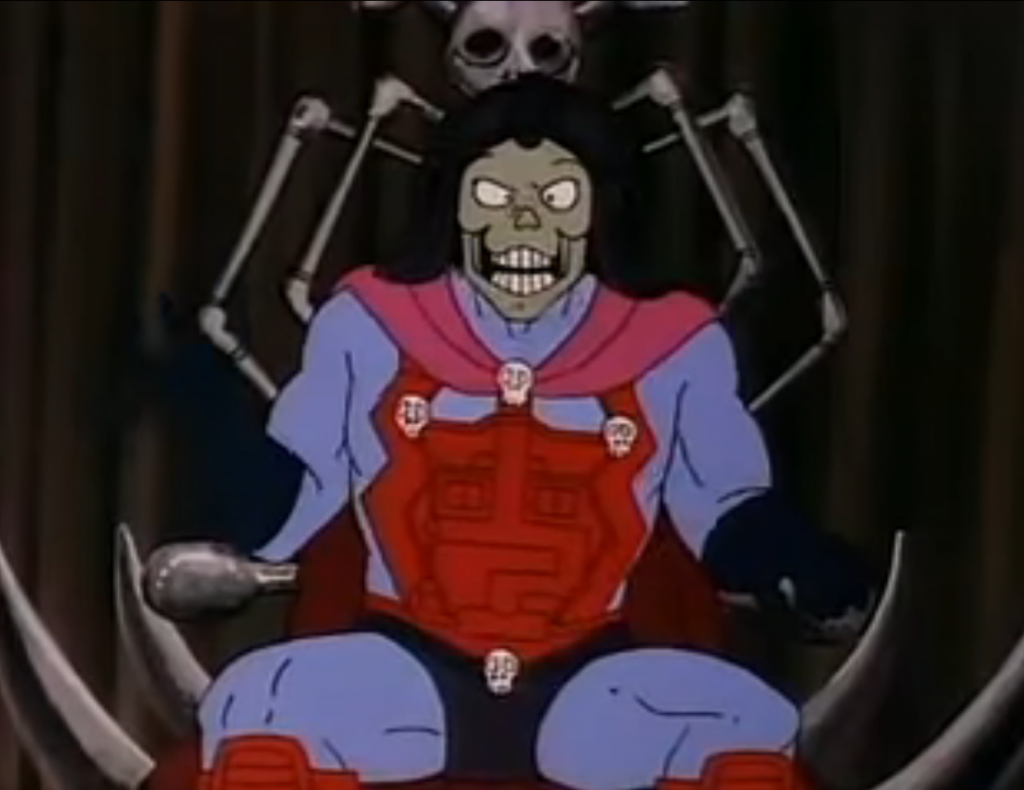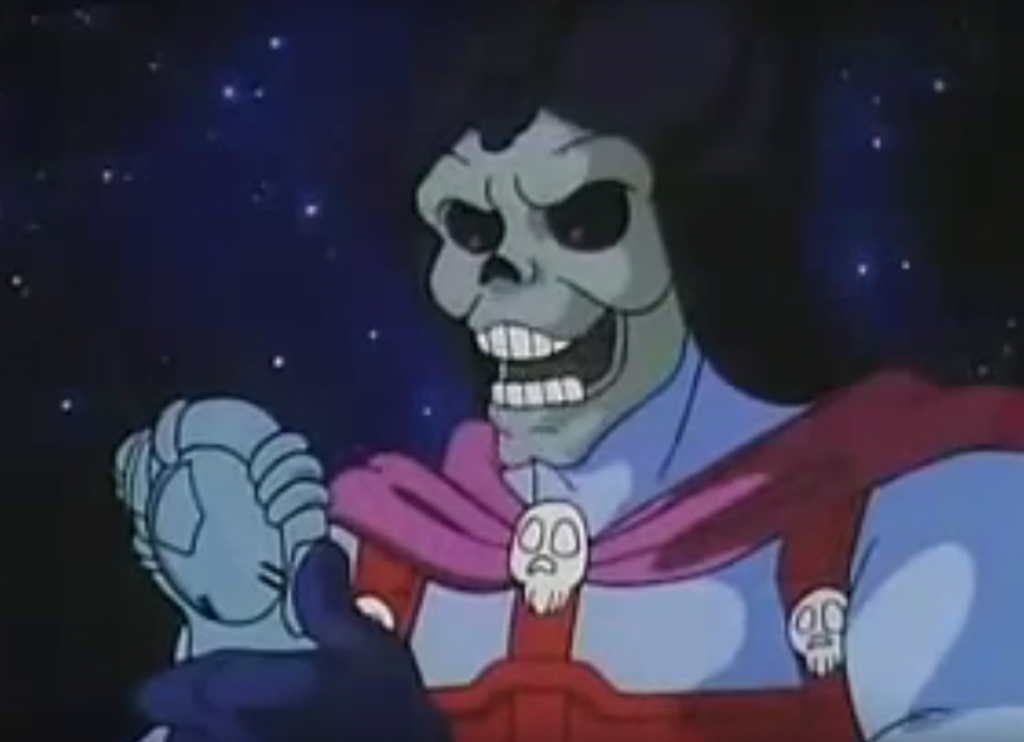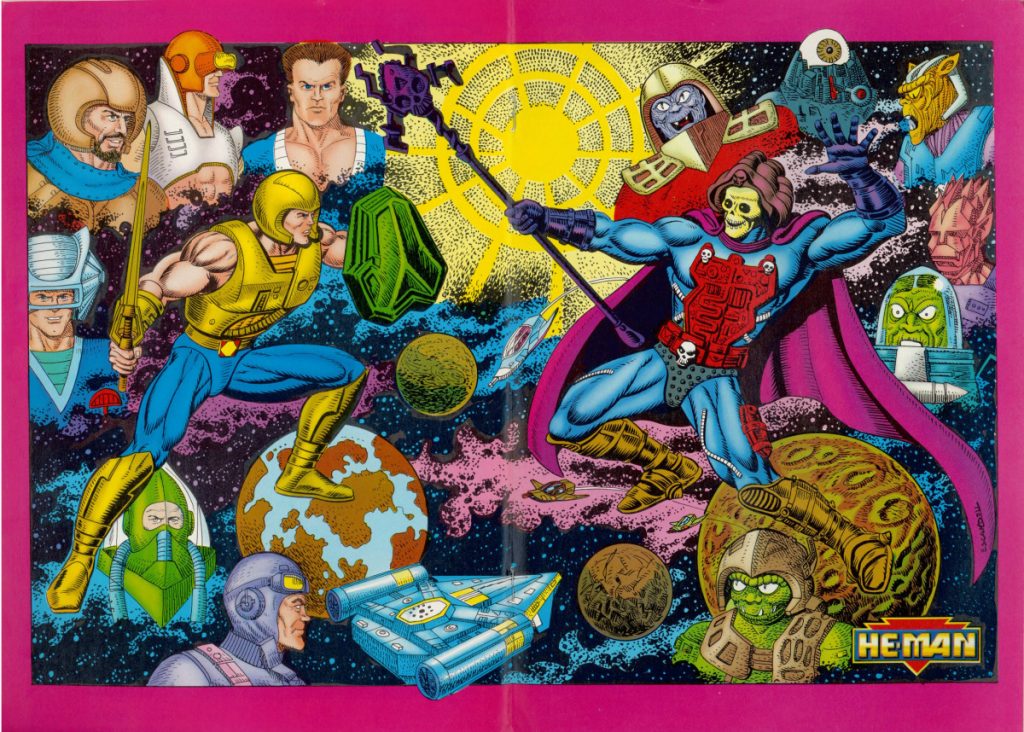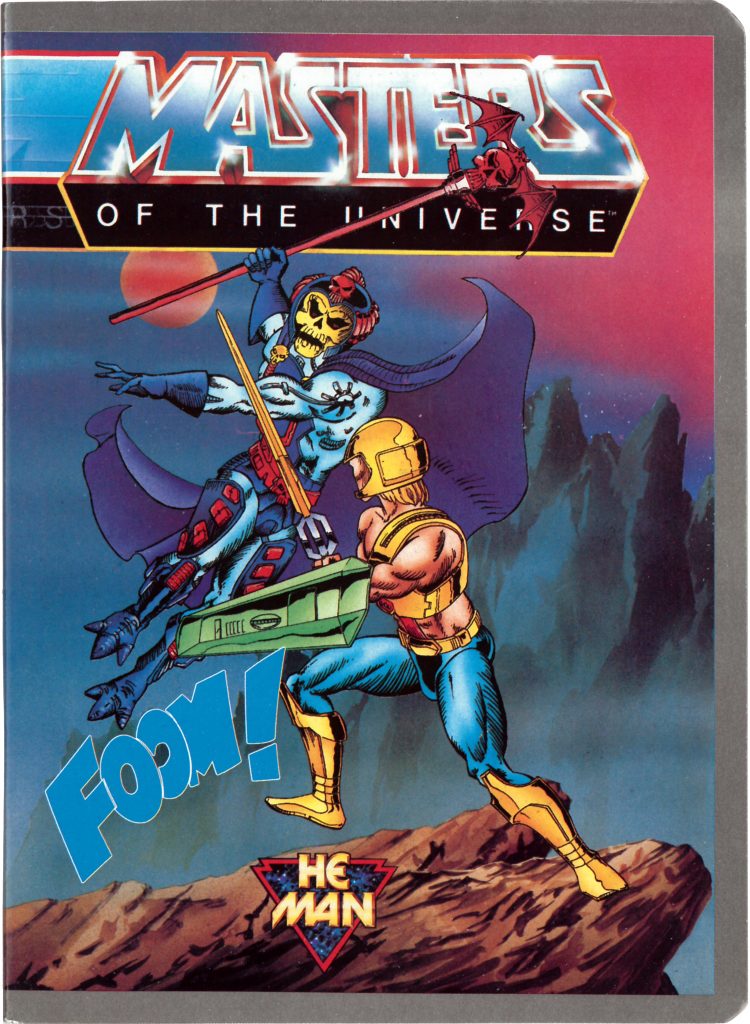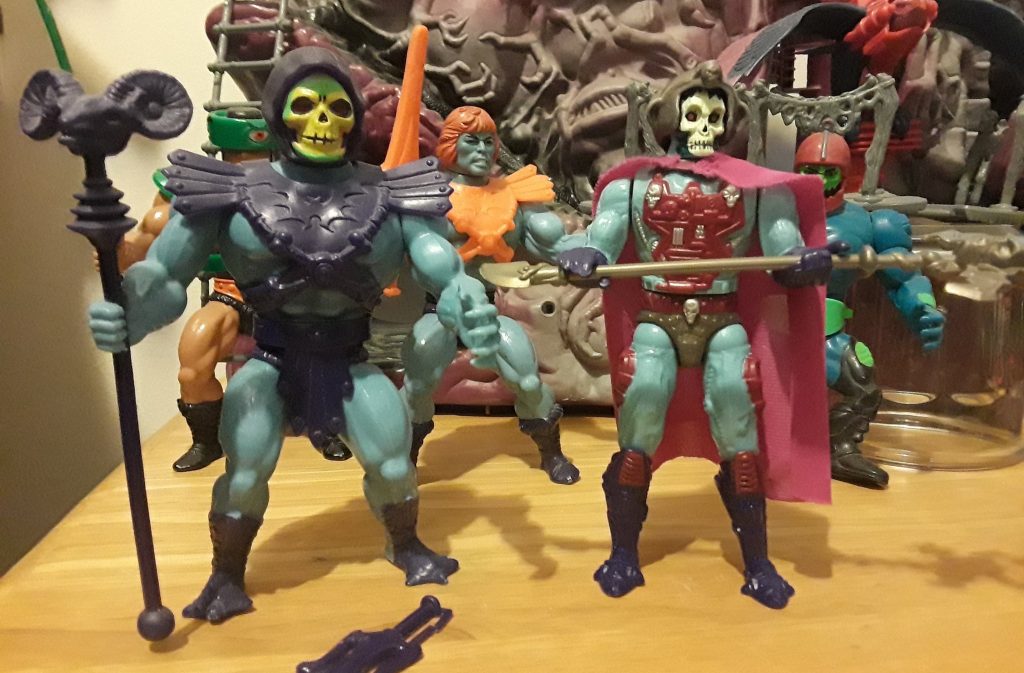
The 1989 He-Man reboot is often considered by most fans to be a failure. It’s true that the line was less commercially successful than the original line (a high bar to clear). On the other hand, the rebooted “He-Man in space” line lasted for four years – twice as long as the more popular 200x reboot. So, perhaps it’s not fair to call it a failure.
I was never a fan of the “New Adventures” reboot, until one day I was. I think it was a sudden and intense interest in Laser Light Skeletor that drew me in that direction. Still, while I love most of the evil characters in the 1989 line, most of the heroes are a bit under-cooked for my tastes. My theory is that they kept the heroes more generic-looking so that they could be reused for other toylines (and indeed, several of them were reused in Mattel’s Demolition Man toyline).
I remember running into this toyline on the shelves and thinking “that’s not He-Man” and walking away. I’m sure that’s not the reaction Mattel was going for. At the time I was reluctantly collecting Teenage Mutant Ninja Turtles – reluctantly, because I considered myself too old for toys. Little did I know.
The 1989 edition of He-Man was designed by Martin Arriola. Two versions of the concept art were shared in Dark Horse’s Art of He-Man book, depicting the figure with and without his snap-on armor and gold helmet.
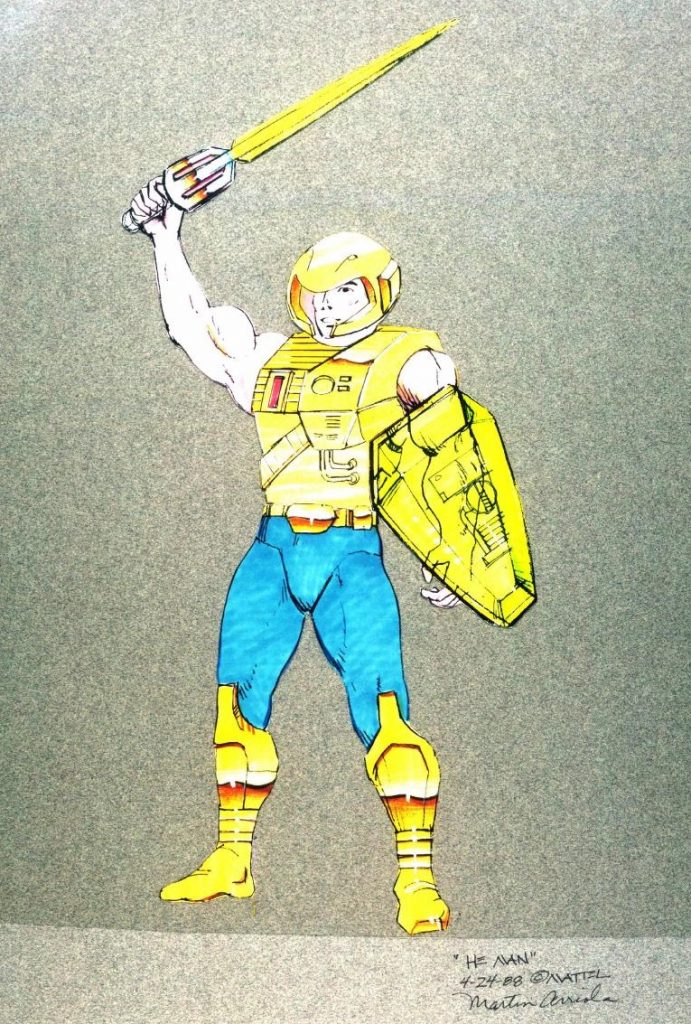
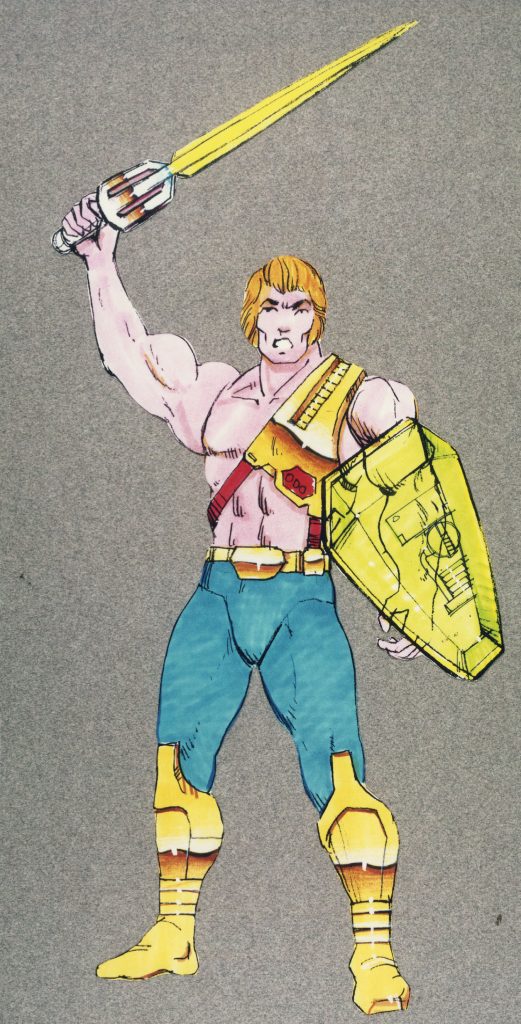
Unlike the “New Adventures” Skeletor, this He-Man would have almost no visual references to any previous version of the character. He’s got gold boots, blue pants, a totally redesigned sword and shield, redesigned harness, and a retro-futuristic armor and helmet. Without any context, I don’t think anyone would immediately connect this design to He-Man, which is I think one of the areas where the reboot went astray. That’s not to say that it’s a bad design – it’s a pretty neat space adventurer design. But is it He-Man?
Update: Here are wax models of the figure’s head, chest and arms, from the Geeks_Antiques Instagram page. Thanks to Fabio Leone for the head’s up!

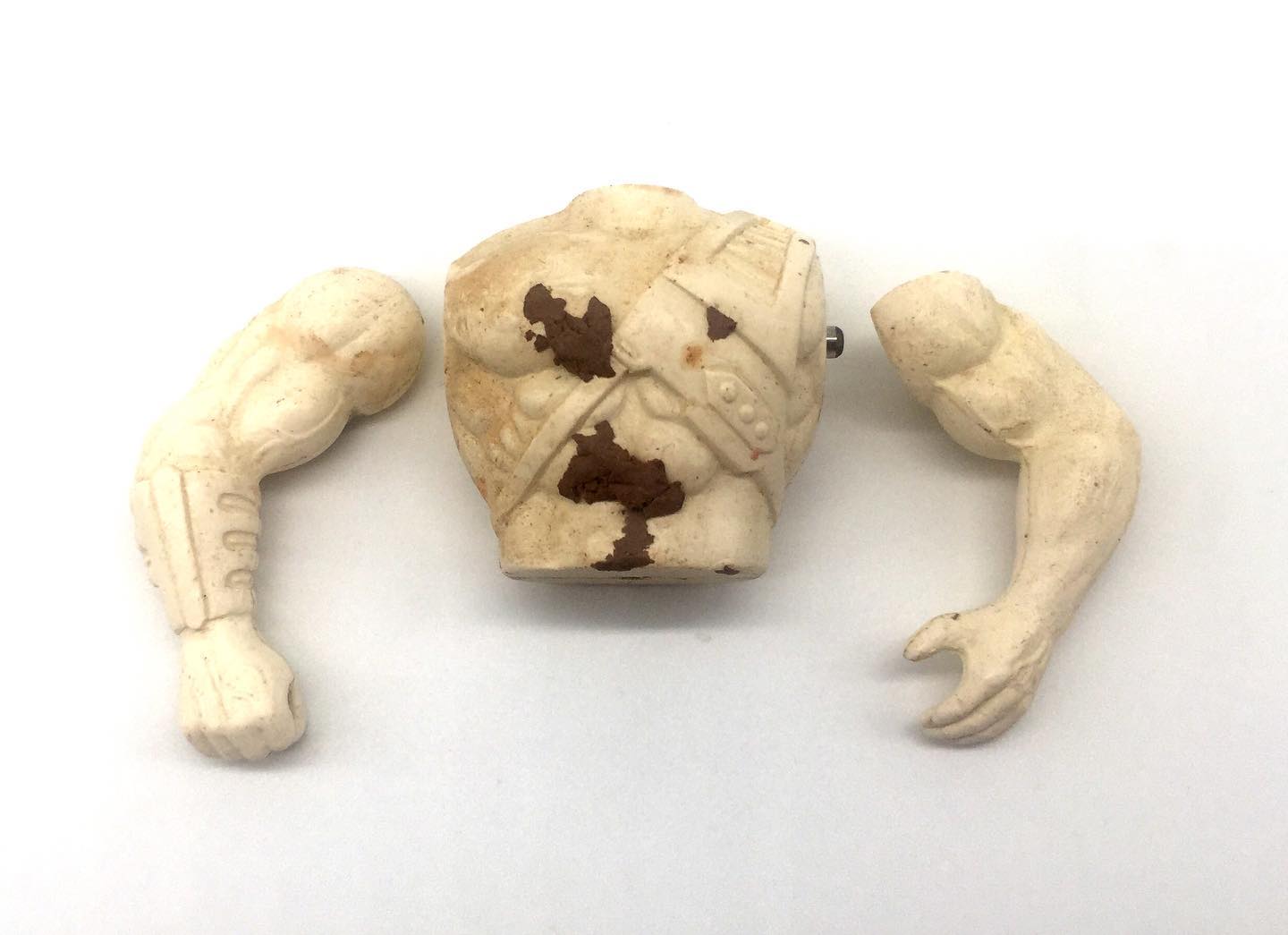
The idea for the shield and probably the sword seems to have been to use clear plastic (giving it something of a connection to the previous year’s Laser Power He-Man). However, in prototypes that showed up in catalog artwork, we see a solid gold sword and a dark, transparent shield.
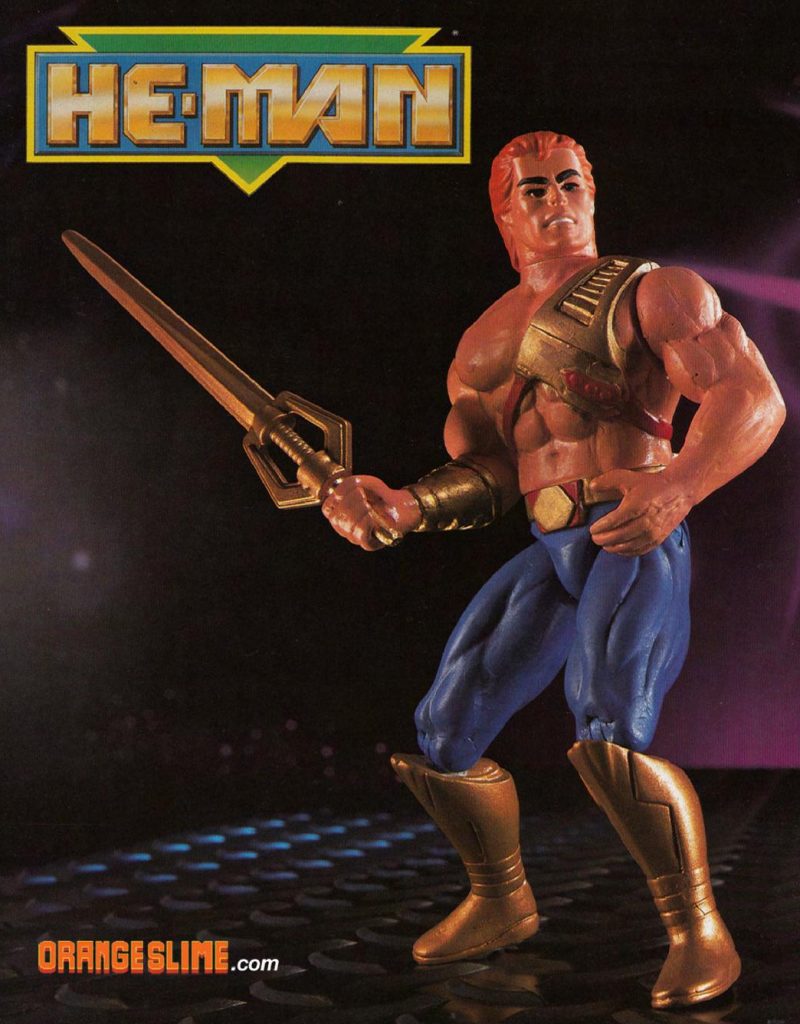

The gold sword and dark shield would make their way into the packaging artwork and other media:
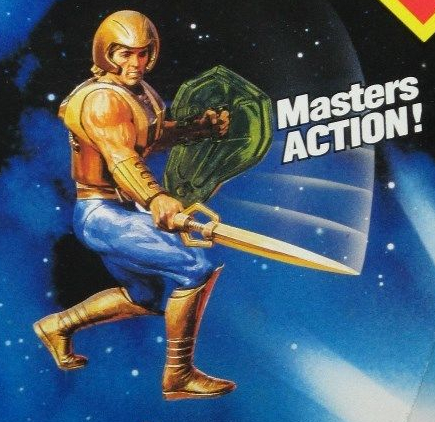
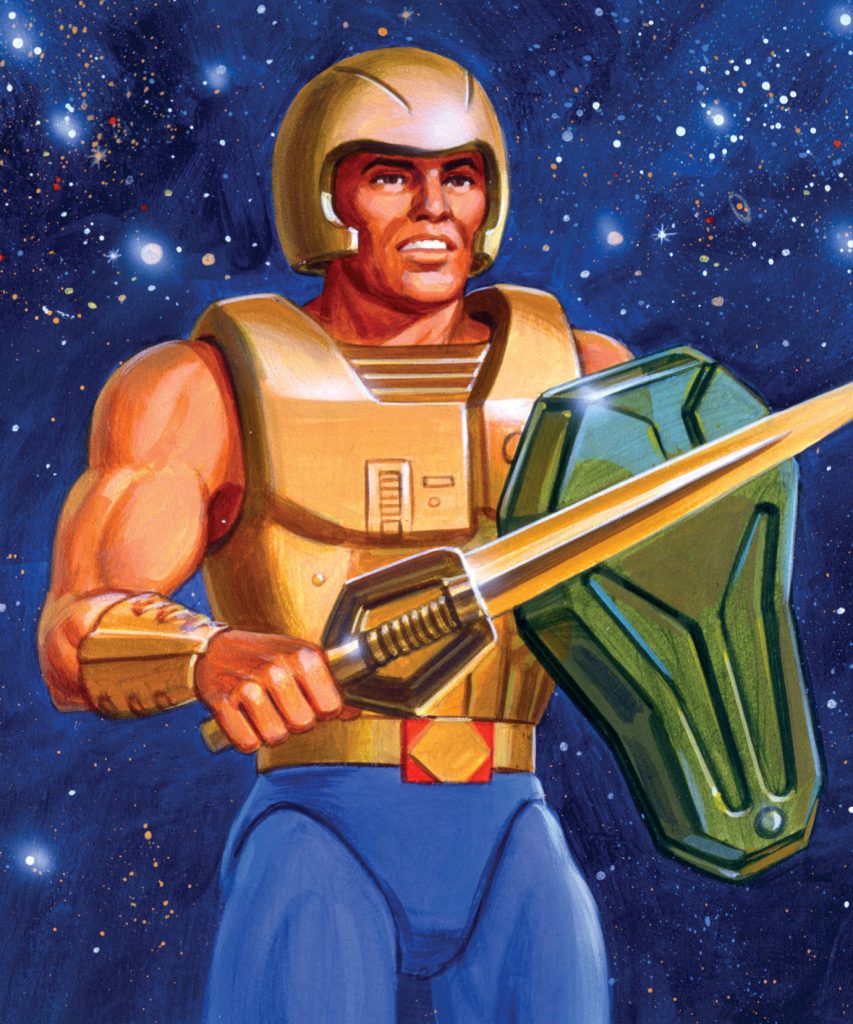

The final toy seems to use LISA (light collecting) plastic in the sword and shield, which were also used in Lego sets around that time. The figure also has a combined H/M symbol added to his belt, a feature not present in the concept art or prototype. The face does resemble the original 1982 He-Man’s face, but it’s subtle enough that it would be easy to miss that this was a He-Man figure, with no other visual references to previous versions. The figure could be displayed with or without the snap-on armor and helmet.
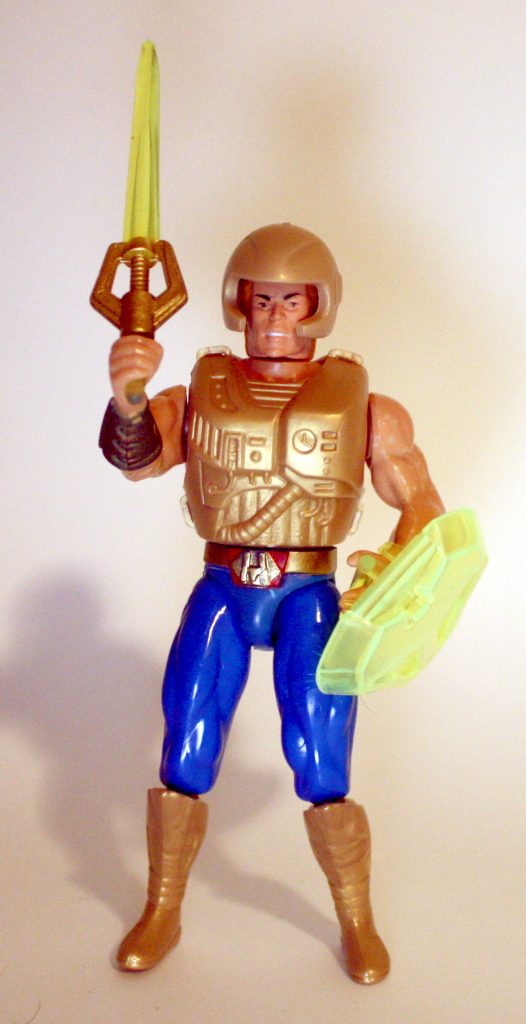


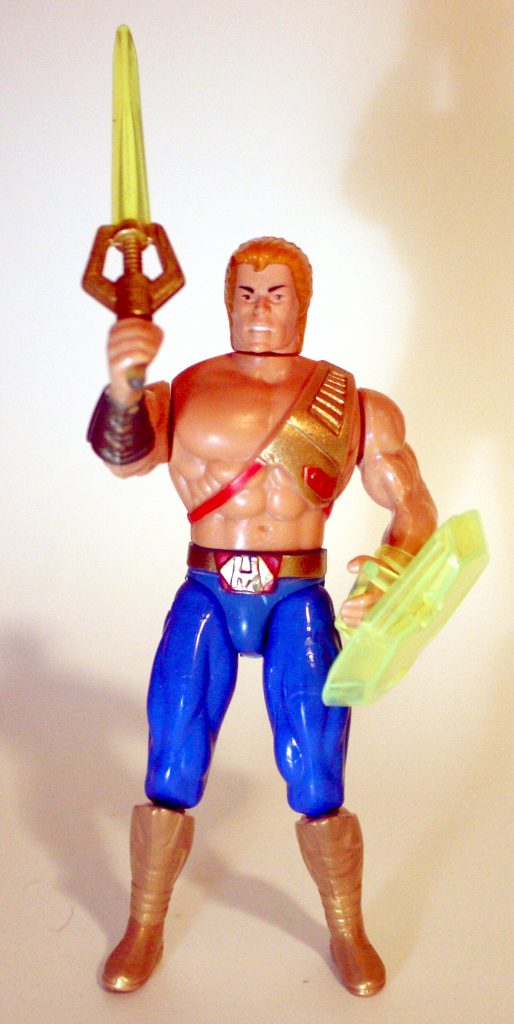
The design is somewhat reminiscent of Bow from the She-Ra line:

He-Man’s boots are a metallic gold plastic with a bit of swirliness. That type of plastic would pop up in toys all over the line, in various shades of silver, gold, bronze, and copper. This is especially apparent in figures like Optikk:
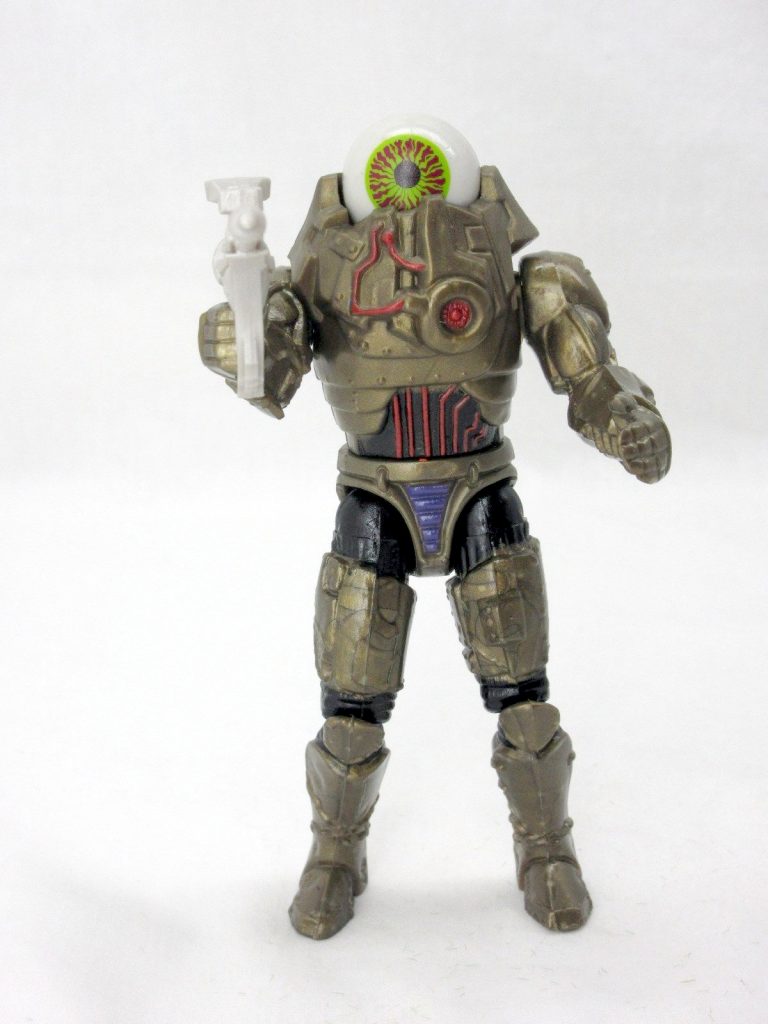
He-Man was sold in a number of configurations: a single card, or in giftset with either Skeletor, Flogg or Slushhead. The design of the single card’s bubble is a bit little different on the Euro card, which has a smaller section for He-Man’s accessories.
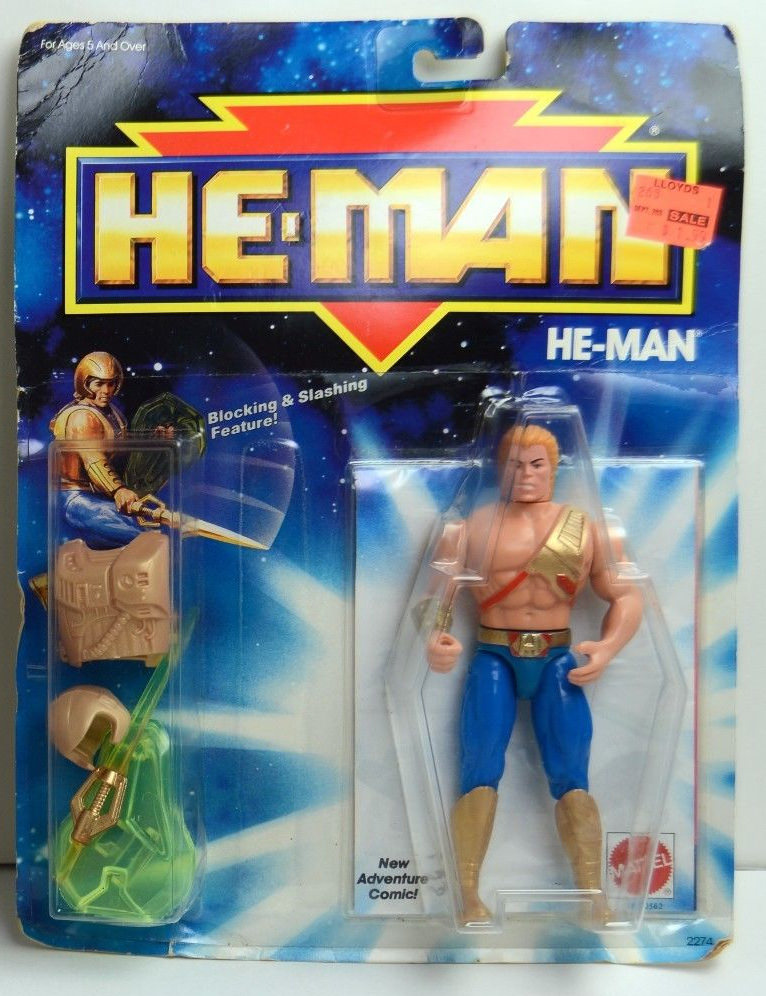
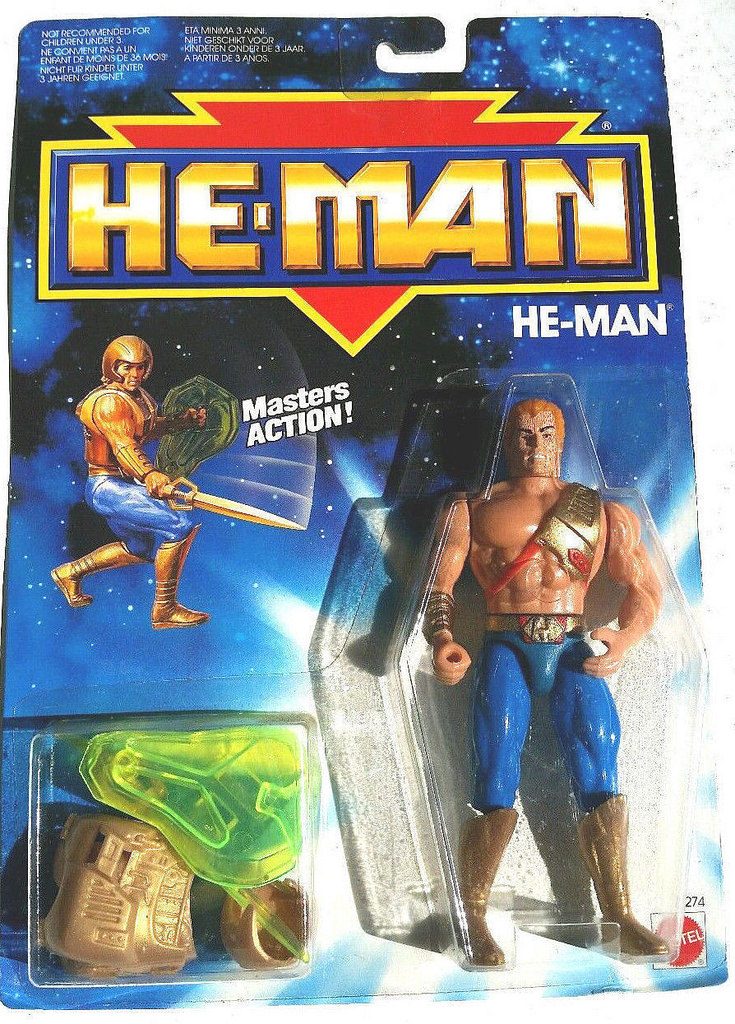
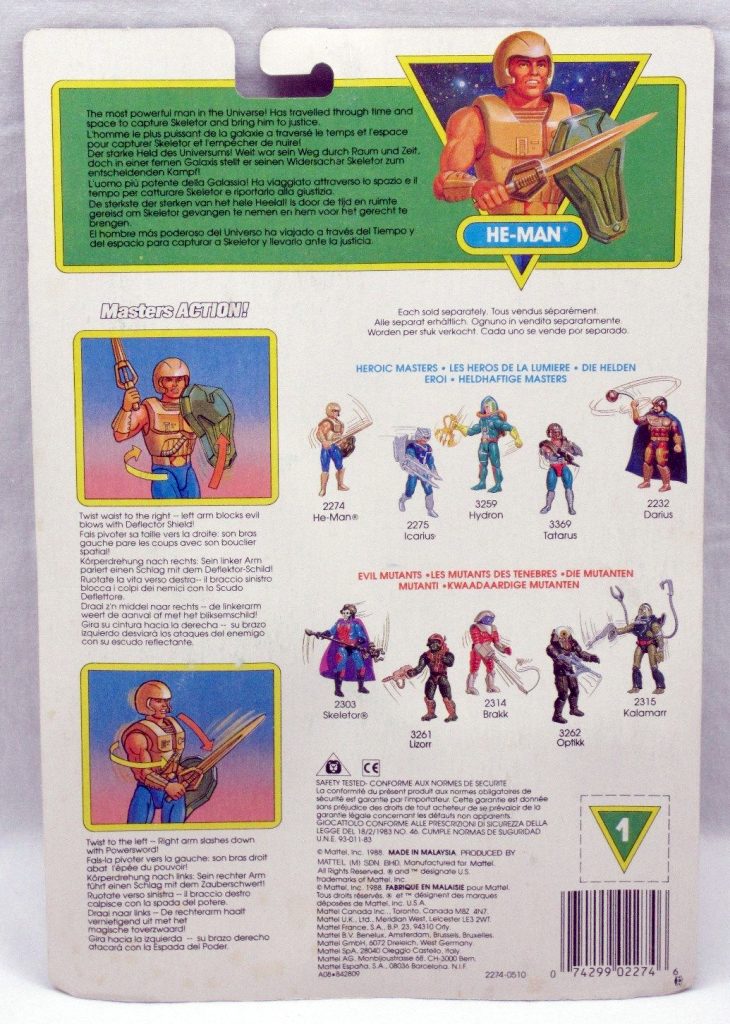
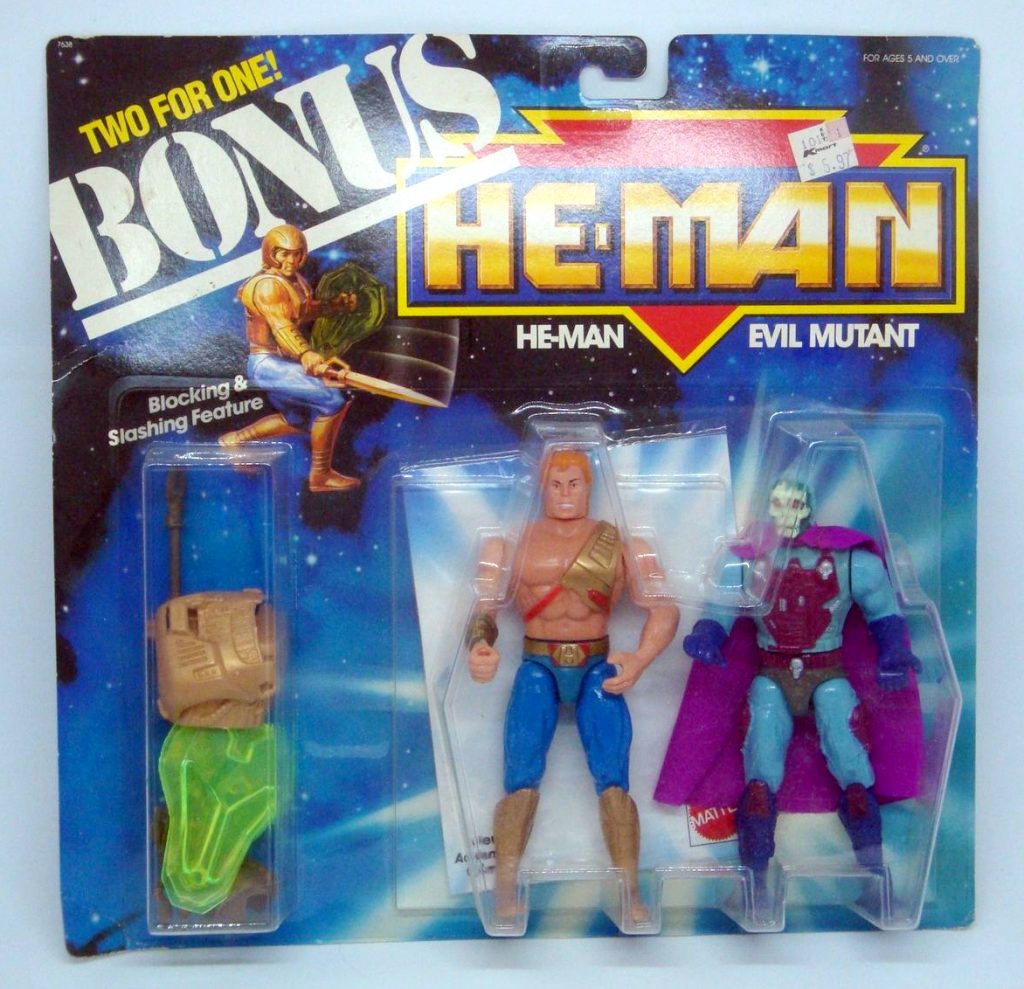


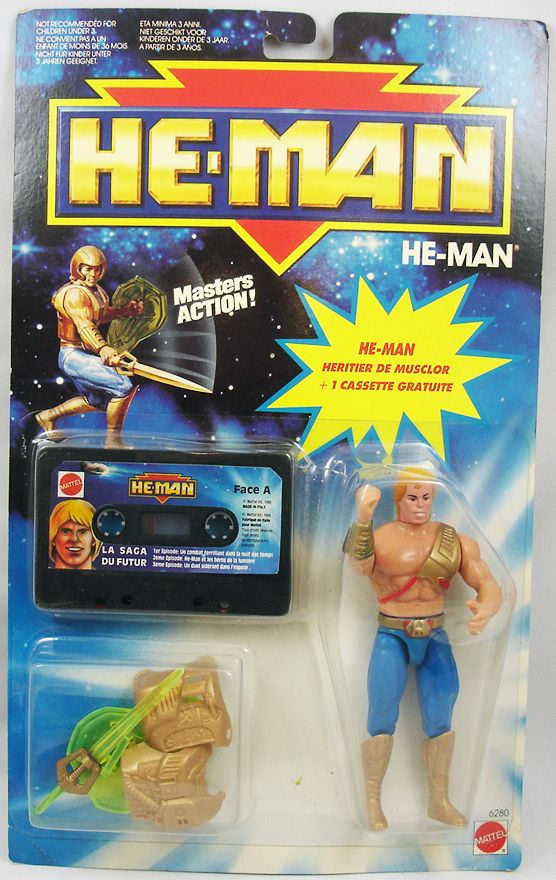
He-Man appeared in toy form and in CGI form in a promo for the new line in 1989:
As mentioned previously, Mattel had planned to ask Filmation (the studio that had produced the first He-Man cartoon) to make a cartoon series for the He-Man reboot. Its title would have been He-Man and the Masters of Space (information via Dušan M./James Eatock). Filmation went out of business in 1989, but they did create some artwork and a basic storyline for the pitch. He-Man’s look here more or less follows the design of the toy, although he has a solid gold sword like the prototype, as well as some additional red detail. Update: per Dušan M., Gerald Forton at Filmation actually came up with the initial design that Mattel used in the development of the “New Adventures” He-Man toy.

Image via the Ancient Library of Grayskull Facebook group/Dušan M.
Filmation tended to prefer symmetrical character designs, allowing them to flip cells over reuse them in the reverse pose. To that end, this look was also created.

Image via the Ancient Library of Grayskull Facebook group/Dušan M.
Interestingly, Errol McCarthy also illustrated a version of the character with somewhat similar armor:

For more information on some of the details of Filmation’s vision for the reboot, see this post at the Ancient Library of Grayskull Facebook group. Or, check out cereal:geek issue 14.
Update: Robert Barbieri recently uncovered some early Jetlag animation concept artwork that was based on a Mark Taylor design for a more tattered, battle hardened looking He-Man.
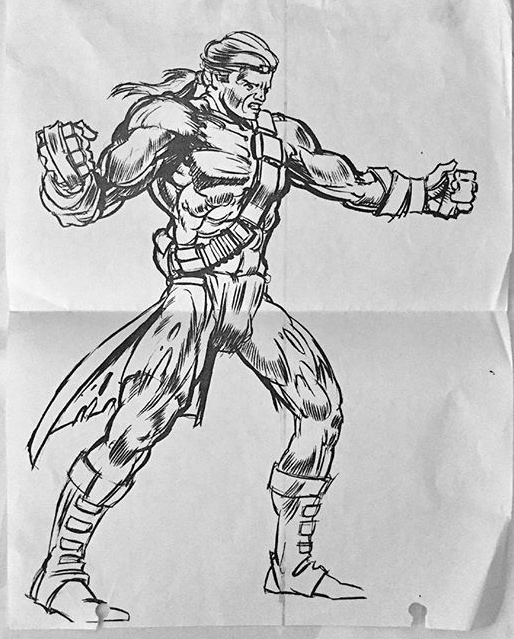

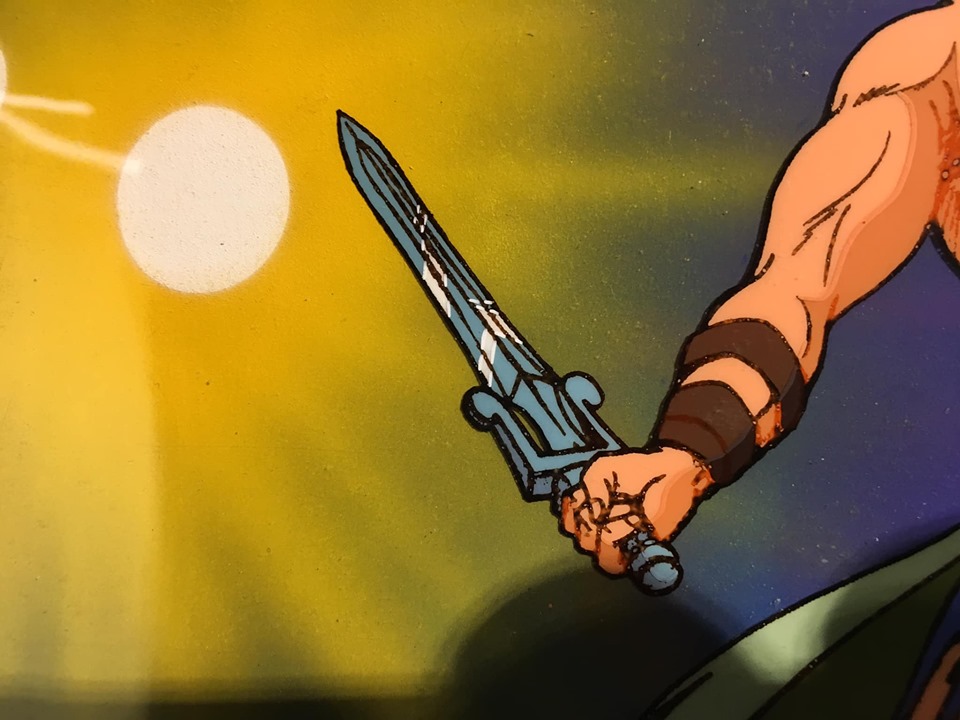
Jetlag’s take on the character also seems influenced by the Mark Taylor design, as well as the Martin Arriola design. The series starts off on Eternia, before He-Man and Skeletor are whisked off into the future, but both of them already sport their New Adventures costumes.
Startlingly, after getting a warning from the Sorceress, a redesigned Prince Adam transforms into He-Man right in front of his parents, who hadn’t been aware of his secret identity previously. From there he rescues Hydron and Flipshot from Skeletor’s clutches, and returns with them to the future to save Primus from the mutants.



The Jetlag version of the character I think looks a bit better than the action figure, at least color-wise. In my opinion the brown works much better with blue than gold does. Even his sword is silver rather than gold. But I’ve always had a weird bias against blue and gold together.
He is not the all-powerful collossus as depicted in the Filmation series. He has to struggle to defeat even ordinary villains. Strength-wise, he’s very similar to He-Man as depicted in the 1987 Masters of the Universe movie.
He-Man very rarely has his shield in the Jetlag series, but when he does, it resembles the dark prototype version.
Mattel put out four minicomics for the series, illustrated by three different authors. In this canon, a familiar-looking Prince Adam (holding a power sword that looks like Mattel’s 1989 light-up power sword) actually permanently transforms into his new He-Man self in front of Skeletor. Skeletor had tricked Hydron and Flipshot into transferring the power of Castle Grayskull into their ship. Skeletor planned to hyjack it and take the power for himself, but Prince Adam stops him, and permanently transforms into his futuristic-looking self on the ship.
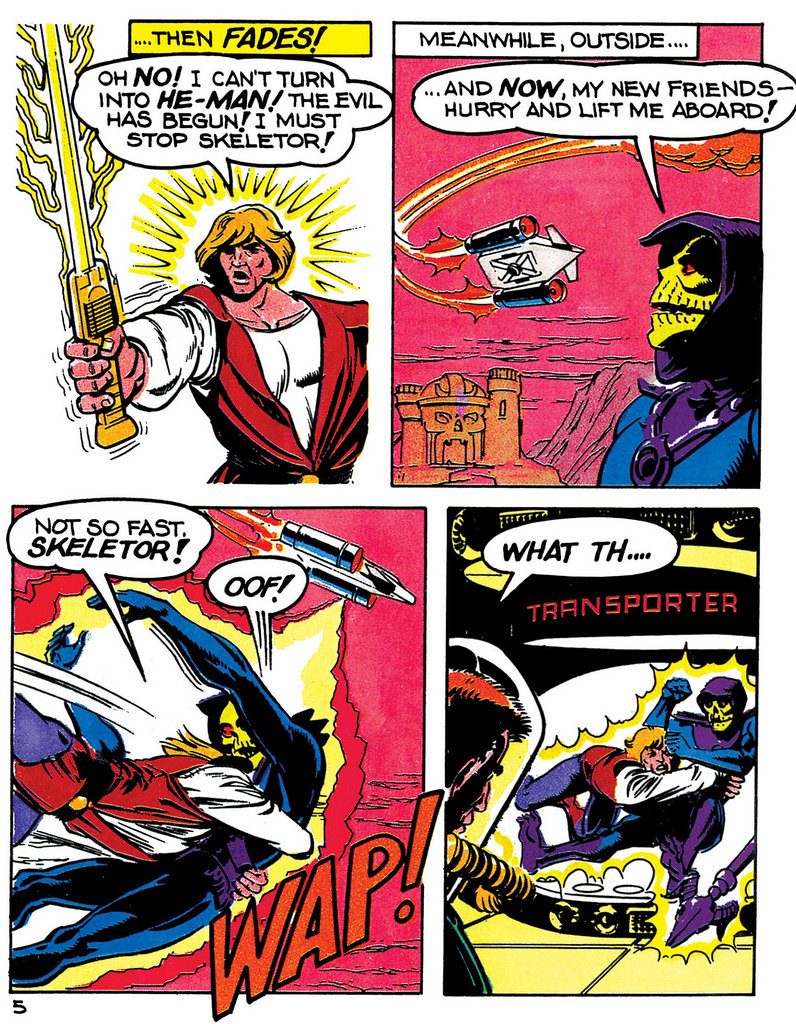

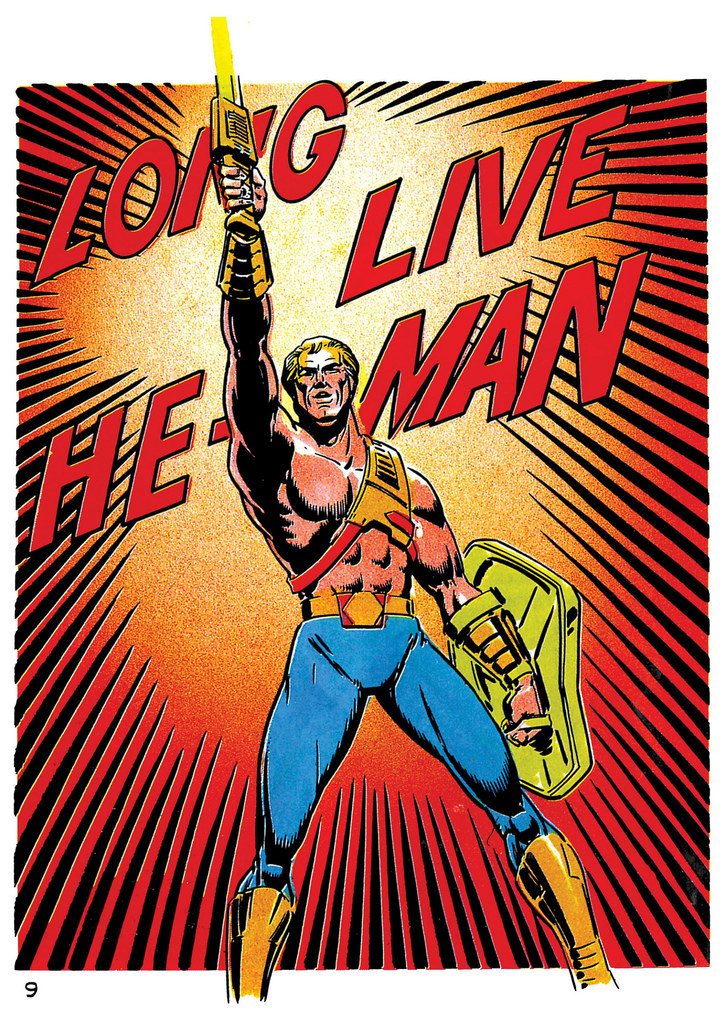

On the cover of The New Adventure, He-Man wears his helmet and armor, but otherwise he goes without these accessories for the rest of the short series (images are from Dark Horse’s He-Man minicomic collection).
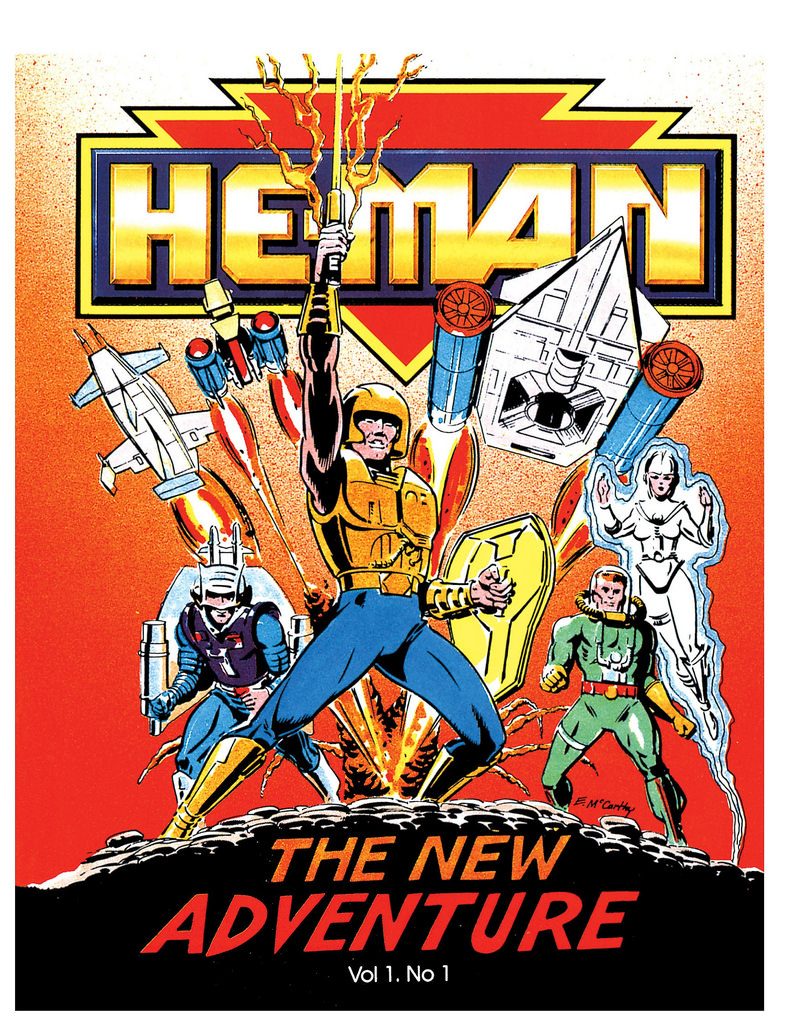
The UK He-Man Adventure Magazine covered the New Adventures series, sometimes depicting the character with breastplate and helmet, sometimes with just his helmet, and sometimes without either accessory. The design is, again, based on the prototype figure (images via He-Man.org):



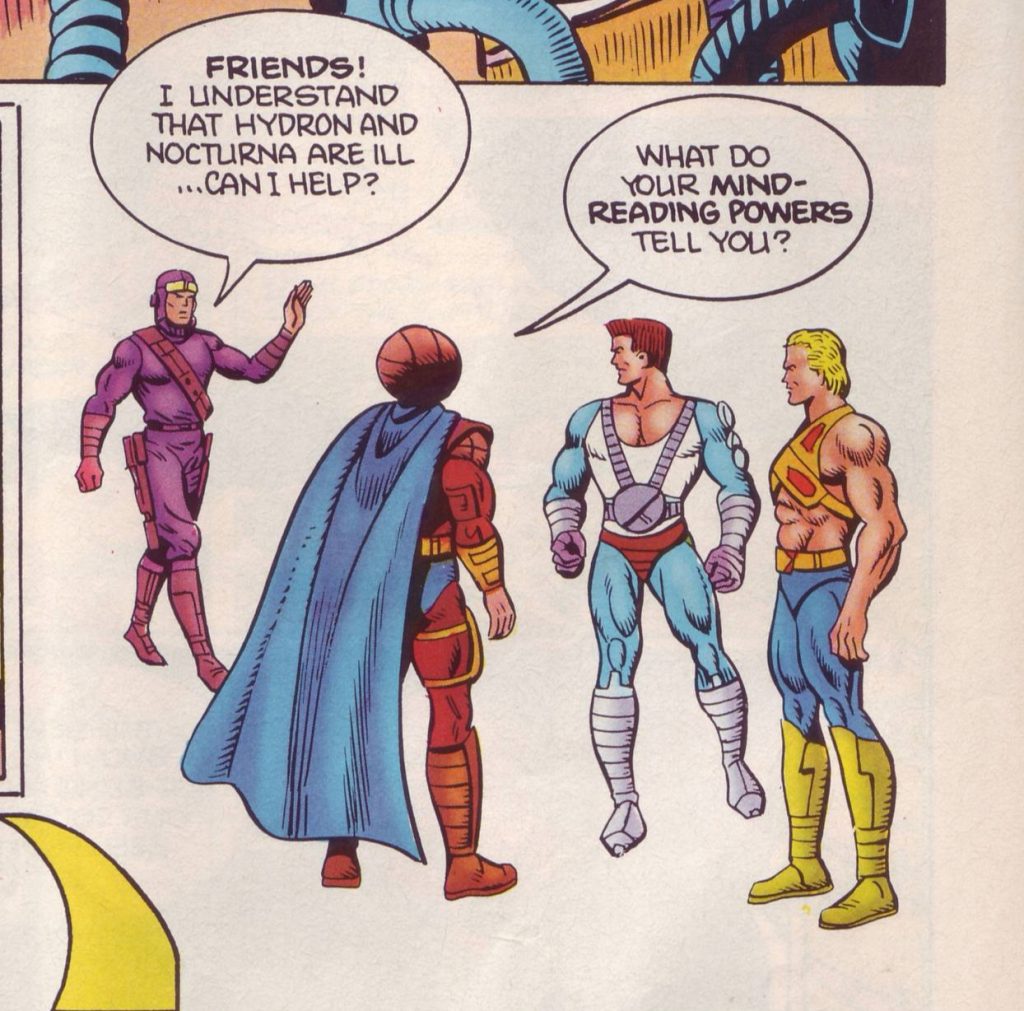
So, finishing my thought from earlier in the article – what to make of this radical He-Man redesign? I have to say I like the design overall, but I think it was a mistake. Without the label on the package, no kid would have looked at this figure and guessed that it was supposed to be He-Man. There should have been some kind of call-back to the original character, beyond just giving him blonde hair and a sort-of similar face. He should have retained some of his original colors – gray, red and orange.

He could have retained the helmet and chest armor (ideally in silver or gray), but underneath there could have been the usual X-shaped harness with either an H or a cross symbol, with some futuristic embellishments. We needed something to tell us that this was not just future space man, but future space He-Man.

Want to support the blog? Consider becoming a Patreon supporter. You’ll also gain access to exclusive content and early access to posts on the blog. Alternatively, you can do your toy shopping through my Entertainment Earth affiliate link, below. Thank you!
